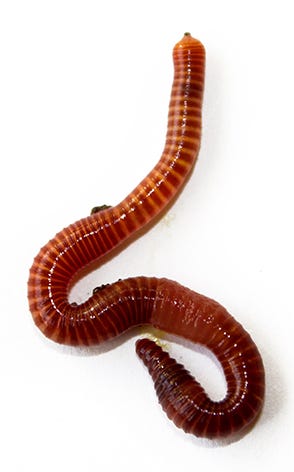Thriving red wigglers: Essential tips for beginners
The Ultimate Overview to Red Wigglers for Healthy Soil
The duty of red wigglers, scientifically understood as Eisenia fetida, in dirt wellness is a topic of raising passion amongst sustainable horticulture lovers and agricultural experts alike. These microorganisms not just recycle organic waste but also improve soil fertility with their nutrient-rich spreadings.
What Are Red Wigglers?
Red wigglers, clinically understood as Eisenia fetida, play an important duty in composting and dirt wellness. These earthworms are particularly fit for vermicomposting, a procedure that utilizes their all-natural actions to decompose raw material efficiently. Unlike other earthworm species, red wigglers prosper in rich natural environments, making them optimal for compost bins and worm farms.
Determining regarding three to 4 inches in length, red wigglers have a distinctive reddish-brown pigmentation and a segmented body that aids in their mobility via rotting materials. They are detritivores, meaning they eat rotting organic compounds, including kitchen scraps, plant particles, and paper items. red worms. Via their intake of these materials, they aid break down complicated compounds, turning them right into nutrient-rich castings that enhance dirt high quality
Red wigglers are also respected breeders, with the ability of reproducing promptly under ideal problems. Their versatility to various atmospheres allows them to prosper in a series of composting systems. By recognizing the biology and ecological significance of red wigglers, garden enthusiasts and farmers can harness their capacities to boost dirt wellness and promote lasting practices in farming.

Advantages of Red Wigglers
The many benefits of integrating red wigglers into composting practices dramatically enhance dirt health and wellness and fertility. These earthworms, clinically called Eisenia fetida, excel at damaging down organic issue, transforming kitchen scraps and yard waste right into nutrient-rich vermicompost. This procedure not just accelerates decomposition however also improves the soil with vital nutrients such as nitrogen, phosphorus, and potassium.
Moreover, red wigglers enhance soil framework by creating aggregates that promote oygenation and water retention. Their burrowing tasks promote a well-aerated atmosphere, allowing roots to gain access to oxygen more successfully. This enhanced aeration also fosters helpful microbial task, which is vital for nutrition cycling and general soil vigor.
In addition to improving dirt make-up and structure, red wigglers add to pest administration. Their presence in the soil helps suppress damaging nematodes and various other bugs, reducing the requirement for chemical interventions. The application of vermicompost leads to enhanced plant resilience versus conditions, promoting much healthier development.
Establishing a Worm Bin
Establishing a worm bin can be a fulfilling endeavor for those looking to enhance their composting initiatives. The initial step is picking an appropriate container, ideally made of plastic or wood, with a capability of a minimum of 10 gallons to accommodate the worms and their food. Guarantee the container has adequate air flow-- pierce tiny holes in the cover and sides to promote air movement while avoiding excess dampness buildup.

Introduce the red wigglers right into the bin, allowing them to adjust to their new environment. Preferably, begin with a population of about one pound of worms per square foot of surface. Lastly, place the worm bin in an area that keeps a steady temperature level, ideally in between 55 ° F and 77 ° F. With these fundamental steps, your worm container will certainly be all set to prosper in the search of healthy soil.
(red worms)
Feeding Your Red Wigglers
When it comes to nurturing red wigglers, comprehending their dietary demands is crucial for maintaining a healthy and balanced worm bin. These worms flourish on a diverse diet plan, mainly helpful resources made up of natural matter.
Portion control is important; overfeeding can cause smell concerns and attract pests. An excellent general rule is to use food that is about equal to the weight of the worms in the bin each week. Screen the usage rate and change feeding quantities appropriately.
To promote a balanced diet regimen, purpose to offer a mix of nitrogen-rich eco-friendlies, such as vegetable peels, and carbon-rich browns, such as dried leaves or cardboard. Additionally, keeping correct wetness degrees is essential-- food scraps should perspire yet not soggy - red worms. By carefully managing their diet and environment, you will certainly ensure that your red wigglers remain healthy and effective, contributing efficiently to the composting process
Using Worm Spreadings in Soil
Integrating worm spreadings right into dirt can dramatically improve its health and wellness and fertility. Worm castings, likewise recognized as vermicompost, are a rich resource of nutrients, consisting of nitrogen, phosphorus, and potassium, vital for plant growth. When included in soil, these castings boost its framework by boosting aeration and enhancing dampness retention, which is particularly useful in deserts.
Additionally, worm castings present helpful bacteria that advertise a healthy and balanced dirt environment (red worms). These bacteria aid in damaging down natural matter, making nutrients quicker available to plants. The existence of these microbes additionally assists subdue soil-borne illness, lowering the demand for chemical plant foods and chemicals
To make use of worm spreadings properly, mix them right into the top few inches of soil before growing or apply them as a leading clothing around developed plants. An advised application price has to do with 10-20% spreadings blended with soil to optimize vitamins and mineral accessibility without frustrating the plants.
Final Thought
In conclusion, red wigglers, or Eisenia fetida, play an essential role in enhancing dirt health via their vermicomposting activities. Eventually, the assimilation of red wigglers right into soil monitoring strategies promotes lasting farming by lowering dependency on chemical plant foods and cultivating useful microbial task.